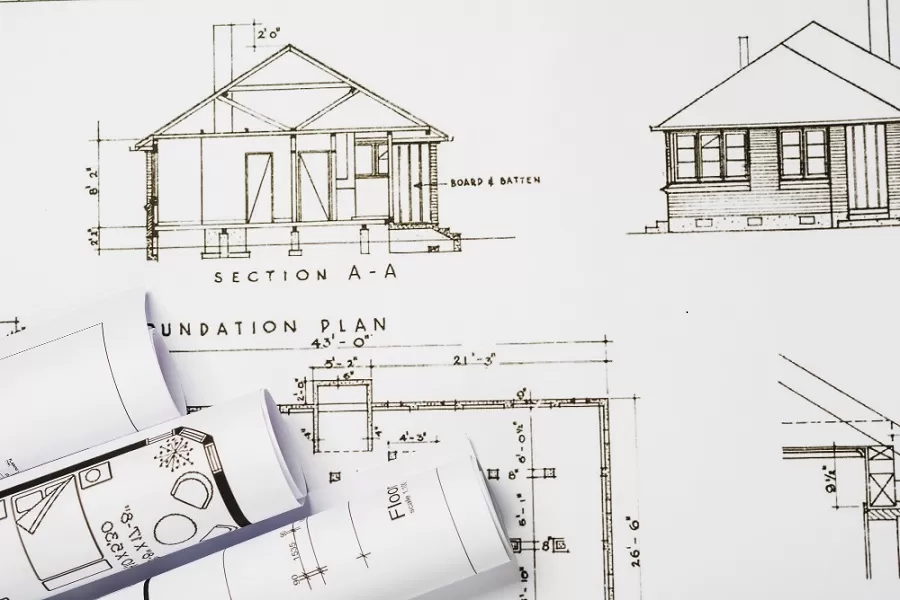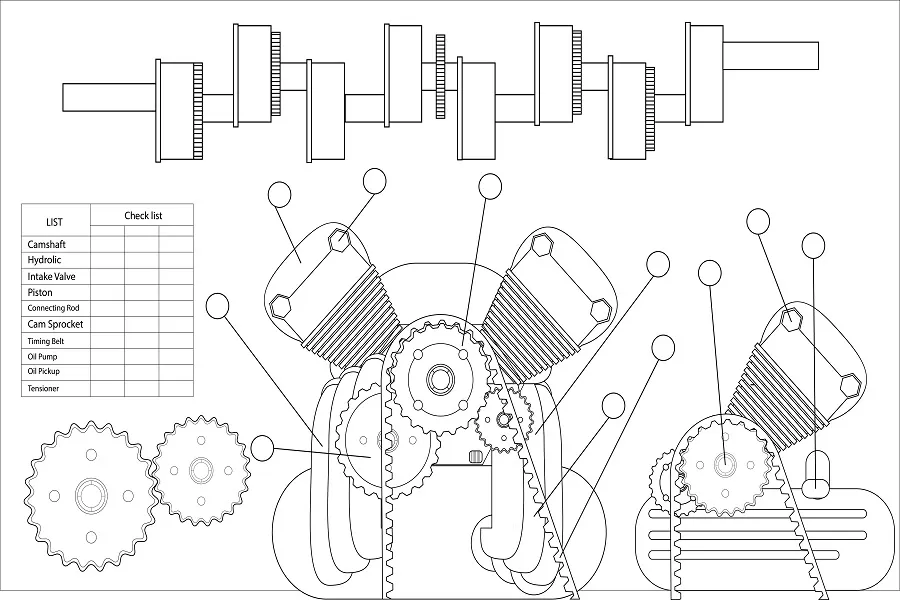When it comes to interior design, “millwork” and “casework” are two terms that are often used interchangeably. While both concepts are closely related to each other, they are not the same – and their intrinsic differences can significantly affect the aesthetics and functionality of your designs and ultimately the success of your business. That’s why, it is important to understand the difference between the two and how millwork shop drawings and casework shop drawings can be used to enhance the visual appeal and functionality of the space.
What are Millwork Shop Drawings?
Millwork drawings are a set of detailed technical drawings that provide precise instructions for the fabrication and installation of custom millwork components. Here millwork refers to any type of woodwork piece that is custom-crafted in a mill or woodworking shop. These include doors, windows, moldings, cabinetry, and architectural elements.
Millwork shop drawing services involve a high degree of detailing and personalization. Created using computer-aided design (CAD) software like AutoCAD, , millwork shop drawings include detailed dimensions, material specifications, assembly instructions, and other important details that are necessary for the accurate production and installation of millwork products.
|Also read: How to Create Detailed and Precise Millwork Shop Drawings: Process, Benefits, and Best Practices |
What are Casework Shop Drawings?
Casework shop drawings, on the other hand, are pre-fabrication drawings that provide instructions for the fabrication and installation of modular or pre-fabricated wooden furniture. This includes cabinets, shelving, and other storage units typically made from wood, metal, or plastic. These components are commonly found in kitchens, bathrooms, offices, and other interior spaces where storage and organization are essential.
Just like millwork, casework shop drawings are also created using CAD software and demand precise dimensions, material specifications, and assembly instructions. But caseworks are not custom-made for your space but mass-produced in the factory for retail shopping. They are practical and aesthetically pleasing, but not custom-designed, and are generally less expensive than millwork.
An example of casework products would be wooden furniture sold at Amazon or IKEA.
Millwork vs Casework: Understanding the Difference Between the Two
| MillWork | Casework |
| Custom-made woodwork crafted by skilled artisans to fit specific design requirements. | Pre-manufactured or modular furniture/ cabinets made in factories |
| Includes items like doors, windows, trim, paneling, and decorative elements. | Includes cabinets, shelves, and storage units |
| Highly customizable and allows designers to create intricate designs and unique architectural details. | Can be customized only to some extent |
| Handcrafted by skilled carpenters or millworkers in a workshop setting. | Mass-produced in factories using automated manufacturing processes. It involves the use of machinery and assembly lines to produce standardized cabinets and storage units in large quantities. |
| Millwork components are usually installed on-site by carpenters or millworkers. Installation may require precise measurements and custom fitting to ensure a seamless integration with the surrounding architecture. | Casework is often delivered pre-assembled or in flat-pack form and can be easily installed by contractors or DIY enthusiasts. |
| Due to its custom nature and handcrafted quality, millwork tends to be more expensive than casework. | Casework is generally more cost-effective than millwork since it is mass-produced in a factory setting. |
Making the Right Choice
Both Millwork and Casework are important for designing residential and commercial structures, and both use cutting-edge CAD drafting techniques to deliver satisfactory results. But when it comes to casework vs millwork, making the right choice depends on various factors. These include:
- The scope of the project,
- The design preferences, and
- The budget
Choosing Casework Drawings
Choose Casework shop drawing services if you:
- Want a modular design that can adapt to changing needs?
- Are looking for a cost-effective woodwork solution for your interior design project?
- Want to increase your installation speed and work schedules?
Choosing Millwork Drawings
Go for Millwork shop drawings if you:
- Want to give a customized and unique look to your space?
- Want to create a luxurious environment with intricate architectural details?
- Want to add bespoke craftsmanship to your project portfolio
- Are open to longer timelines and potentially higher budgets.
So, if you are working on a residential or commercial project that requires higher levels of customization, millwork drafting services may be the preferred choice as they offer greater design flexibility and customization options as compared to casework. But it comes with higher costs too. Millwork tends to be more expensive than casework due to labor-intensive designing processes. So, if budget is a primary concern, opt for casework as it can help keep costs down while still providing functional storage solutions.
Evaluate your project requirements and make an informed decision that aligns with your project goals and budgetary requirements. Whether you choose millwork or casework, investing in expert shop drawing services is essential for bringing your vision to life and creating spaces that are both functional and aesthetically pleasing. So, partner with Enginerio’s shop drawing experts to streamline your design process, minimize errors, and achieve optimal woodwork designs that not just meet but exceed your expectations – all within your budget.
Contact us today and get a customized quote tailored to your needs!





